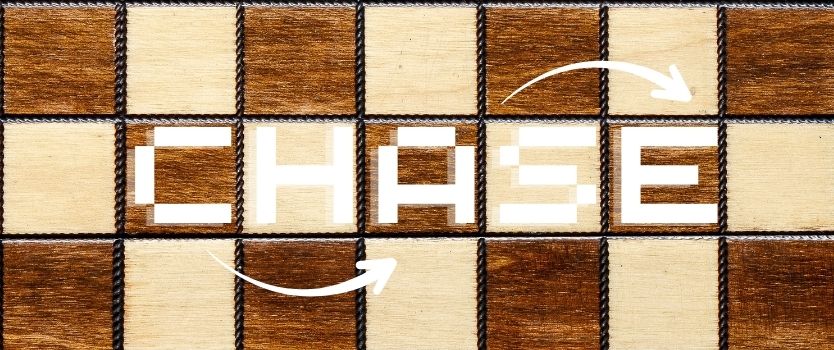
DiCentralization is the Hybrid Solution to the Problems of Centralization and Decentralization
The Interesting Way That A Simple Game Mechanic Can Change Everything
FREEdom of authority
The Division Of Authority Through Incentivized Self-Direction
DiCentralization is the way just about everything in nature works, from your body and brain to the growth of plants to electrical forces. In each system there are two inverted forces working in harmony because of one simple trick: every action that can be taken also benefits the other side. DiCentralization takes human nature into consideration, assigning power and authority to functions — rather than people who make decisions for others — that anyone can perform only if it benefits others at the same time. When any party seeks out maximum benefit for themselves, others have opportunities to benefit in proportion, automatically. When we mimic what works in nature, amazing things can happen.
Centralization
Concentrated Power and Authority Among Few Participants That Act Based on Perceived Effectiveness and/or Outsized Incentives

Ill effects at the macro level
Decentralization
Diffuse Power and Authority Among Many Participants That Tend To Defer To Others, Lacking Proper Incentives To Act Meaningfully

Ineffective at the micro level
DiCentralization
Conditional Power and Authority Assigned To Functions Performed By Participants Incentivized To Help Others Before Reaching Their Goals

A synthesis of the first two forms
How Does DiCentralization Work?
In dicentralization there are two unequal and opposing forces whose efforts are inversely proportional while being mutually rewarding, resulting in a productive harmony as they interact with each other. One side seeks to expand while the other side seeks to contract, allowing for a continuous, reciprocal exchange of value. This dichotomy allows for a party to assume either role based on their utility function. (not being limited to playing either role exclusively), such as when a seller of one product becomes the buyer of someone else's product.

Expanding force
A force that seeks to expand and grow without limits. Usually in motion and interacting. Examples include:
In a game with a DiCe mechanism, for example, one would employ this force by seeking to maximize their benefit in some way,... a way that happens to have a contracting effect when executed.

contracting force
A force that contracts and tries to minimize the endless growth of the expanding force. Examples include:
One would employ this force, for example, by seeking to narrow down all of the possibilities in a decision tree to arrive at a single, clear result... a result that has an expanding effect for one or both parties.
DiCentralization In Nature
DiCentralization is the most natural mechanism for organizing human activity, as we can learn from just about everything we are surrounded by. Here are a few of the many thousands of examples of dicentralization in nature.
The Human Brain
Two cerebral hemispheres, one more creative and abstract (expanding force) while the other is more logical and analytical (contracting force). Result: human activity and consciousness
Life and Death
Life expands, while death contracts. Result: the life cycle
Heat and Cold
Heat expands, while cold contracts Result: temperature
Energy
Potential energy contracts, while kinetic energy expands. Result: energy.
Numbers
Prime numbers contract, while recursive numbers (i.e., the golden ratio, or Fibonacci spiral) expands. Result: whole numbers, maths
Musical Notes
A 'circle of fifths' contracts, while an octave spiral expands. Result: music.
The Color Spectrum
Wavelength is order (contraction), while interference is chaos (expansion); ultra-violet light is contraction, while infrared light is expansion. Result: light (and energy)
The World's Economy Has DiCentralization At Its Core.
The world's economy is in large part dicentralized, through prices – the fundamental incentive of economic systems. In the pricing system, two parties –a buyer and a seller – regulate prices without the need for a centralized authority. DiCe pricing mechanisms work because people have more information about goods and services, actions, effects, functions, abilities, the general economy, etc., than centralized entities. When buyers and sellers have the right incentives (i.e., value for money and profit, respectively) they can coordinate their own actions, seeking out maximum benefit for themselves while also benefiting the other party at the same time.
Examples of DiCentralized Systems
DiCentralization has a lot to do with game theory, incentives, and why people make choices based on how they perceive the possible outcomes of those choices. The best way to illustrate the principle of dicentralization is with games.
In Chase, you restrict the movements of your opponent in order to trap them without trapping yourself in the process. Every type of move you can make also benefits your opponent.
Qo has just three easy rules. Two players work to keep stones in balance across the board until the game ends, but a player's best moves to win the game are often those that can help their opponent to win. Whether or not their opponent will do the same — and go against their natural instincts — adds to the deceptively simple nature of the game.
BitCoin
Dicentralized between miners and holders. Miners produce and sell BitCoin, while buyers support their mining activities and provide them with a profit. However, as nearly all resources used in mining (such as computational power and electrical energy) are wasted in the mining process when the work of all miners but one or a small group of miners is unused and discarded, it could be said that no one benefits from nearly all of the actions that participants take in the system. Alternatively, the waste is the cost of producing value for both parties and also includes miners keeping the network secure enough to add value to BitCoin.

Others
As the DiCe mechanism is adopted by games, organizations, and other entities and is applied in various types of systems, there will be more examples to list!
Features of a DiCentralized System
Resilient
Any party wishing to harm a DiCe system must first provide benefit to the system, negating any harmful effects.
Auto-Regulating
In DiCe's two-sided incentive mechanism, the more power one side tries to exercise the more they can potentially lose it to the other side. Both sides help the other by default of their self-interest. resulting in dynamic, shifting hierarchies that self-regulate via incentives
open
Permissionless, anyone can join a DiCe system and begin to produce value immediately. Authority can be assumed in a DiCe system by anyone who is producing value for others, resulting in a more level playing field.
Rewarding
DiCe is a system where authority is free to be assigned to whomever helps to perpetuate the system by helping the other side reach its goals. In return, the system rewards all participants based on their inputs. Costs and risks are not diffuse, as in other types of systems, but concentrated on those who make good or bad choices rather than being distributed among everyone in the system.
INCORRUPTIBLE
Generally independent and incorruptible, a DiCe system offers the same rights and authority to everyone.
sustainable
Backed by existing human productivity, allowing users to create credit for themselves rather than servicing the debt of others.
How Decentralization Becomes Re-Centralization
Before the Industrial Revolution workers — such as the pottery factory of Josiah Wedgwood, one of the Revolution's founding fathers — would drink alcohol on the job, take unannounced days off, often worked only a few hours a day and, because none were truly skilled at any one task, produced a generally sub-par product. Labor was generally decentralized, even if workers worked for an authority, such as a business owner.
With decentralization, authority is diluted so much that no one takes responsibility to make things happen. Everyone waits for everyone else to act. This makes decentralization slow, ineffective, and ultimately more bureaucratic than even a more centralized organization.
People are “free from authority” but also “free from action” because decentralization removes many of the incentives that make centralization more effective at production. People tend to take greater responsibility and care when costs or benefits are high for them. Centralization is, of course, not without its dear costs to society.
In the mid-1800s Alexis de Tocqueville, a French historian and author ofDemocracy in America, would write that the French Revolution began with "...a push towards decentralization...[but became,] in the end, an extension of centralization."
Unfortunately, human nature breaks the effectiveness of decentralization.
In computing., decentralized networks can work because computers can be programmed to carry out actions without the promise of incentives. But humans tend to act only when they are compelled to do so which, in decentralized organizations, is not often at all.
For decentralization to really be effective, humans would need to be benevolent. The butcher doesn’t give you meat out of the kindness of his heart but because you’re willing to pay his price for it. His self-interest – not your needs alone - is what drives him to act. You give him what he values (money) and he gives you what you need (meat). This system of two-way incentives is DiCe at work: you are the authority of your money and he is the authority of his meat.
Step 1
People get together with the idea to de-centralize an organization or system. Good in theory.
Step 2
Having little incentive to act and authority diluted too much for effective action, very few — if anyone at all — direct their actions towards the goals of the enterprise.
Step 3
In order to get things done, the organization becomes centralized. This re-centralization often maintains the veneer of decentralization as a signal of its virtues..
Copyright © 2024
All Rights Reserved

